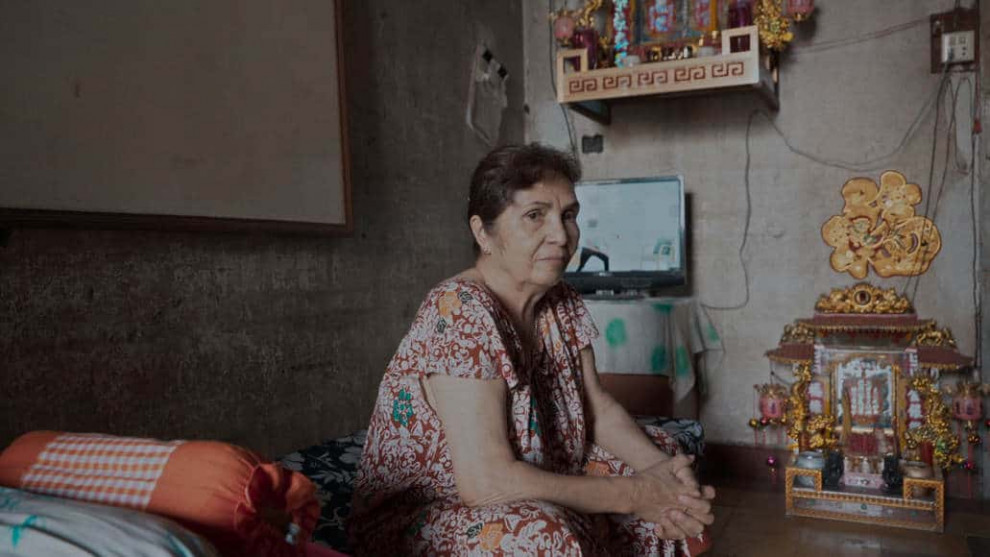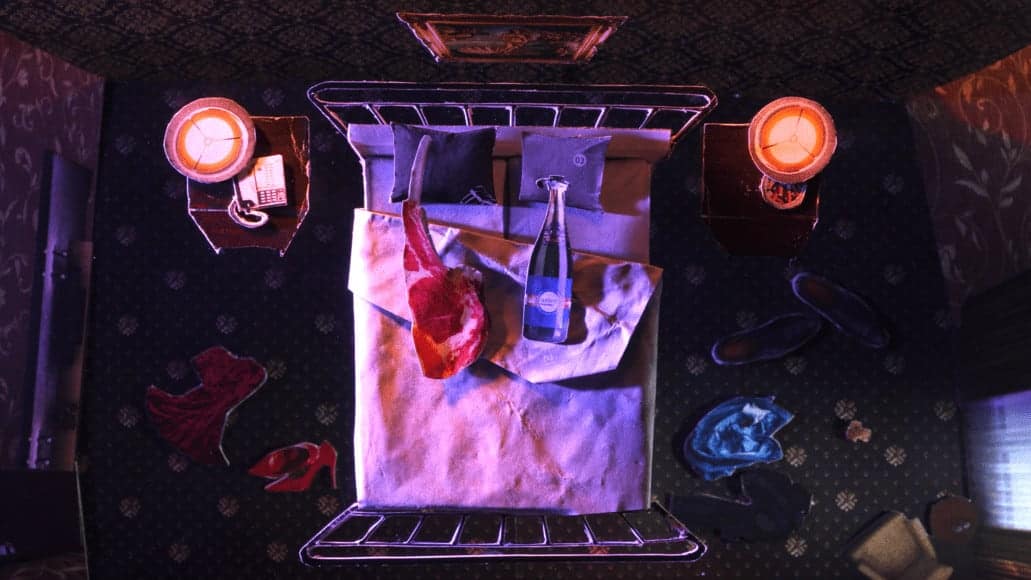“At least this time they're paying us to leave.”
According to the website of White Building Project, the White Building in Phnom Penh is one of the most significant historical landmarks of the country. Built in 1963, it became a symbol of modern Cambodia as well as the darker chapters of the country's past, for example, when its inhabitants were forcibly removed by the Khmer Rouge in 1975. Later on, in 1979, the structure became known as a place for artists and civil servants who lived in the building, making it once again one of the most important spots for Cambodia's cultural life. However, the use of the present tense in these sentences has been misleading since the building itself does not exist anymore. When a Japanese company bought the area and the building, it was just a matter of time before the structure was labeled as “unsafe” by Cambodian authorities and over 500 families had to leave their homes. Kavich Neang's family was one of them.
In his first feature, the Cambodian director accompanies his family as well as many others during their final days and weeks in the White Building. He portrays the meetings with the authorities promising them financial compensation and how they pack up not only their belongings, but their memories of former days, days which have defined their lives and the country they live in. Rather than a memorial to the building, Neang expresses in the press kit to “Last Night I Saw You Smiling” he aimed to “use cinematic expression to bring the building back to life”.
“Last Night I Saw You Smiling“ screened at the
International Film Festival Rotterdam 2019

Perhaps the best way to approach a film like “Last Night I Saw You Smiling” is to embrace the sometimes contradicting notions Neang has captured on film. One of the most telling sequences of the film takes part in the long, dark corridors of the building when a government official informs each inhabitant about their financial procedures while also supervising their relocation. During this process of unwinding of a life, of a family's past and their home, life around the officials moves on with children playing in the corridors and other inhabitants engaging in discussions. The message could not be more obvious about how the building, despite its decaying structures, has become a home, a source of life and history which is now in the (bureaucratic) process of being demolished and replaced.
One of the most bitter examples of irony is how history is about to repeat itself. In a conversation with his mother, Neang and her talk about how again people will have to be removed from the White Building, similar to 1975. While of course the context has changed, the family's perspective has not with a future that is largely uncertain and scary to some. Neang makes a strong point about establishing a generation that has lost a part of their roots, their homes and their feeling of safety which goes along with the eventual demolition of the building. This is not a mere feeling of nostalgia or the inability of letting go, but a profound feeling of helplessness, lack of orientation and fear mirrored by the bleakness of the images Neang has captured.

Evidently, the director shares these feelings. As he states in the press kit, he sensed the notions of “foreboding and loss” within these final weeks emphasized by the presence of old photographs, the stories of the people he interviews and old pop songs blaring from the radio in the apartments. For the people he interviews, as well as himself, there is no stopping what is about to come, but “Last Time I Saw You Smiling” may serve as a means to come to terms with this reality. And perhaps it may bring hope for the future, for a building is a mere structure, but the memory will live on no matter what.
In the end, “Last Time I Saw You Smiling” is a film about loss, fear of an uncertain future and coming to terms with the inevitable. Rather than focusing on a political message, Neang has managed to make a story about memory and home concentrating on the banality of one's routine which is about to become extinct. This is an important film about how to deal with concepts like origin and home in our world, because the way we deal with them may just define ourselves and our future.















